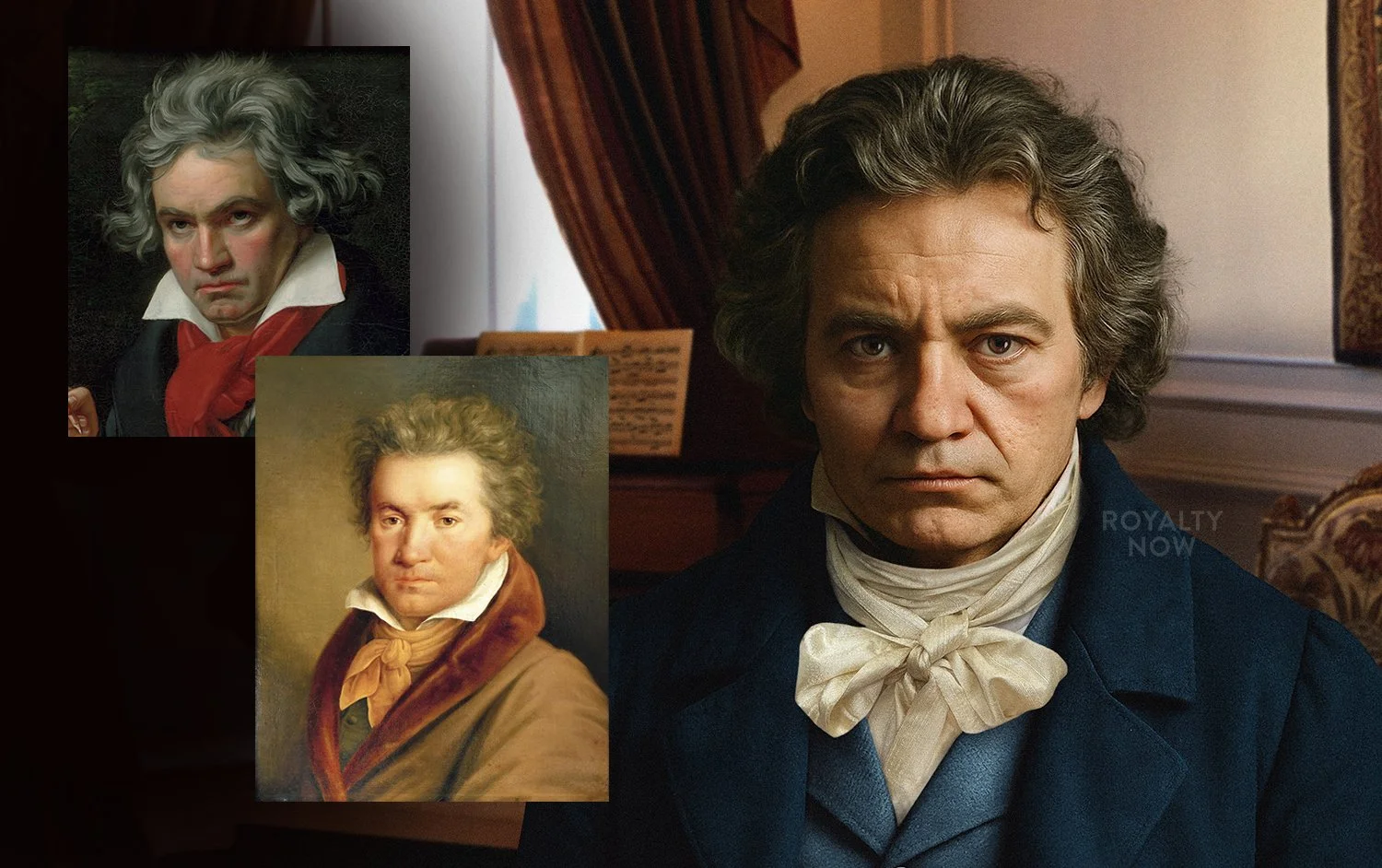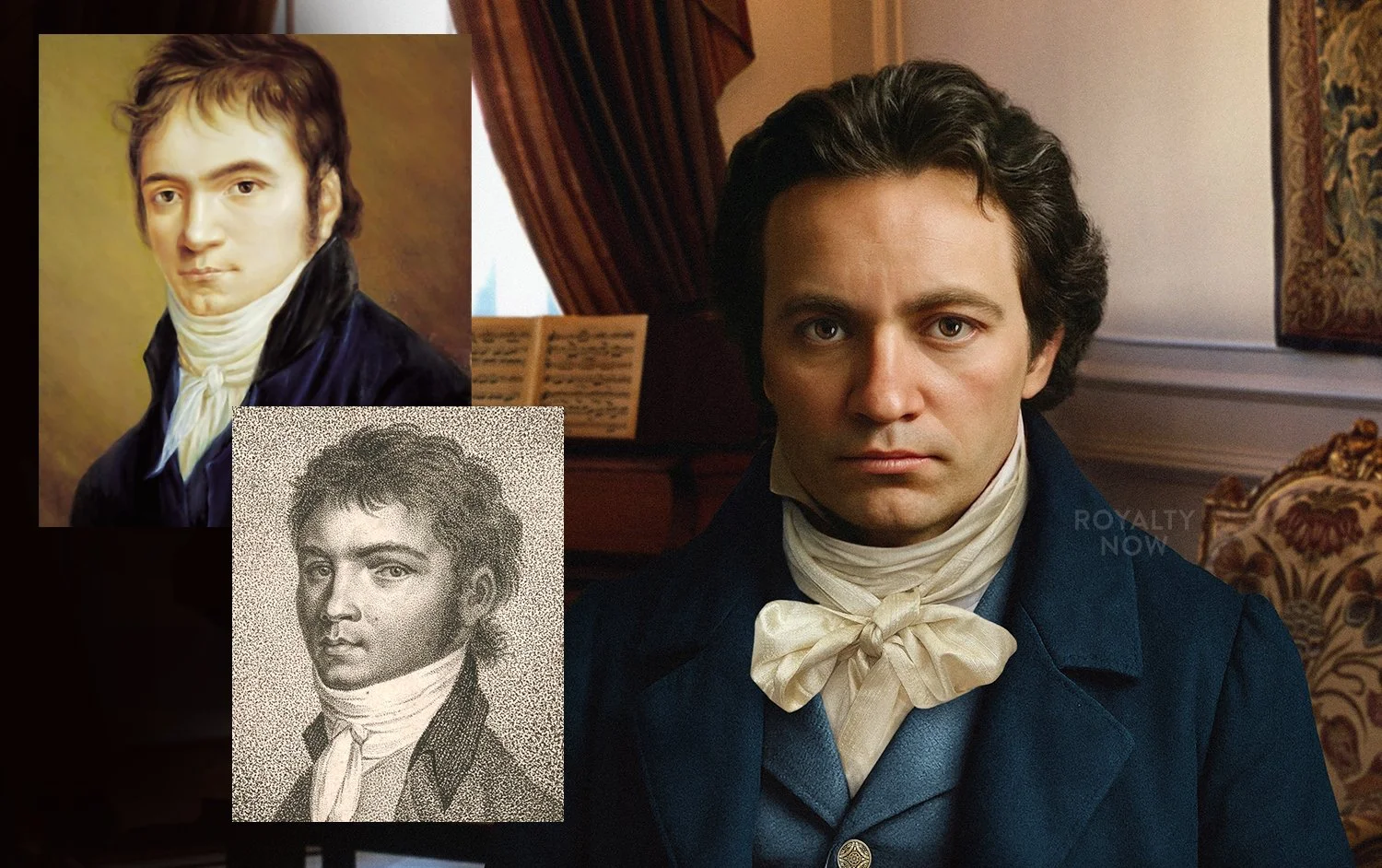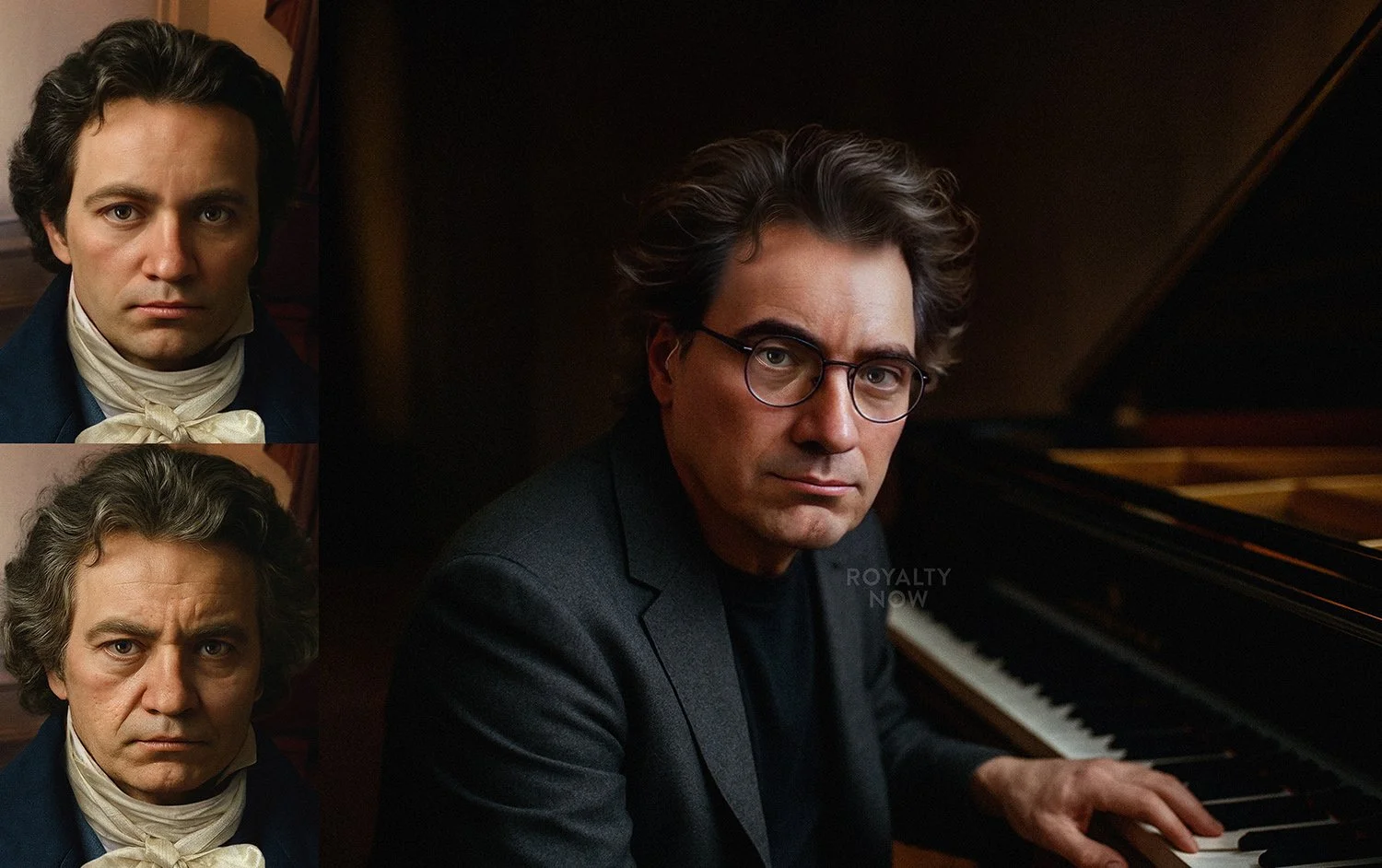What did Beethoven really look like?
Luckily, because of his early success in the music world, we do have several life portraits of Beethoven, from his early 30s until the time he passed away.
Each portrait shows his light brown eyes, full head of dark hair, and distinctive eyebrows. For a full history and portrait analysis, watch the video here.
While we do have an early silhouette portrait of Beethoven at the age of 16, the first true likeness is an engraving, made in 1801 by Johann Neidl, as a copy of a lost original sketch. Beethoven would be around 30 here - this was made during his first true peak of success as a composer in Vienna. The artist created a master engraving plate for this portrait, which was replicated many times to print on music programs and marketing work. It’s interesting to think that this is the face of Beethoven that your average citizen in Vienna would have been familiar with.
In this era, there is also a small painting on Ivory made by Christian Horneman in 1803, which is a really nice image that shows a lot of authenticity in its features.
Life mask of Beethoven, courtesy of the Isabella Stewart Gardener Museum.
In 1812, the 41-year old composer had a life mask made, cast by Andreas Streicher. The Beethoven Haus Museum considers this to be the most authentic and useful portrait of Beethoven, and it’s the origin for most busts and statues.
Just a year later, around 1813, we do start to see a change in Beethoven’s appearance. After enduring hearing loss and depression, we see his personal appearance grow a little more wild, more akin to the romantic, emotional composer image we seem to have in our heads. His hair and clothes become a little more disheveled, and it was said that his manners in public were on the decline as well.
We can see a bit of that in this portrait by Joseph Willibrord Mähler, depicting Beethoven at the age of 45, and this sketch made by August Klober in 1818.
The most famous portrait, housed in the Beethoven Haus Museum, is no doubt this one by Joseph Karl Stieler, made in 1820, when Beethoven was around 50 years old. It’s really contributed to the popular image of Beethoven being a kind of surly, tortured artist.
It turns out that an extraordinarily high amount of lead was found in authenticated locks of Beethoven’s hair which were analyzed by the mayo clinic. This and other heavy metal poisoning would certainly have contributed to his ailments, behavior, and appearance later in life.
I’ve used the life mask as the main reference for my image of Beethoven. I made the kind of Classic Beethoven image first, but then also created a younger version. I think it’s important to remember that Beethoven wasn’t always the surly, wild looking man we see in later images. At one point, he was healthy, talented and thriving.
So, let’s see Beethoven brought to life, now:
A younger interpretation.






